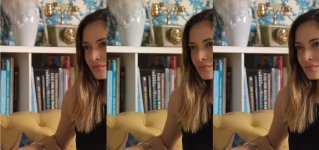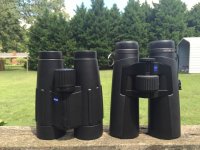Vespobuteo
Well-known member
On basis of the discussion we have had I have tried to refine the method for simulating color bias in binoculars.
Please note that this is experimental.
I used Henry's comparison photo posted above and measured color bias (tint) and white balance temperature (WB) for the different patches/bins.
I got more conclusive results this time with bigger differences in WB (warmth/balance between red and blue)
and also in tint (amount of of green-pink bias).
Probably because the light Henry used in his setup was more adequate (i.e. daylight).
Finally applying these binocular specific value, on the portrait test photo below, after some slight transformation.
Tint must be applied in reverse for example.
In lack of a HT test patch the FL gets to represent Zeiss in this example.
Attached is a comparison between the simulated look of (from left to right):
1) Nikon EII
2) Zeiss FL 8x56
3) Reference photo.
Seems that the photo gets resized, but hopefully you will see the difference, even in this small format.
Skin tones are often very good for detecting color casts in photos.
Please note that this is experimental.
I used Henry's comparison photo posted above and measured color bias (tint) and white balance temperature (WB) for the different patches/bins.
I got more conclusive results this time with bigger differences in WB (warmth/balance between red and blue)
and also in tint (amount of of green-pink bias).
Probably because the light Henry used in his setup was more adequate (i.e. daylight).
Finally applying these binocular specific value, on the portrait test photo below, after some slight transformation.
Tint must be applied in reverse for example.
In lack of a HT test patch the FL gets to represent Zeiss in this example.
Attached is a comparison between the simulated look of (from left to right):
1) Nikon EII
2) Zeiss FL 8x56
3) Reference photo.
Seems that the photo gets resized, but hopefully you will see the difference, even in this small format.
Skin tones are often very good for detecting color casts in photos.
Attachments
Last edited:








